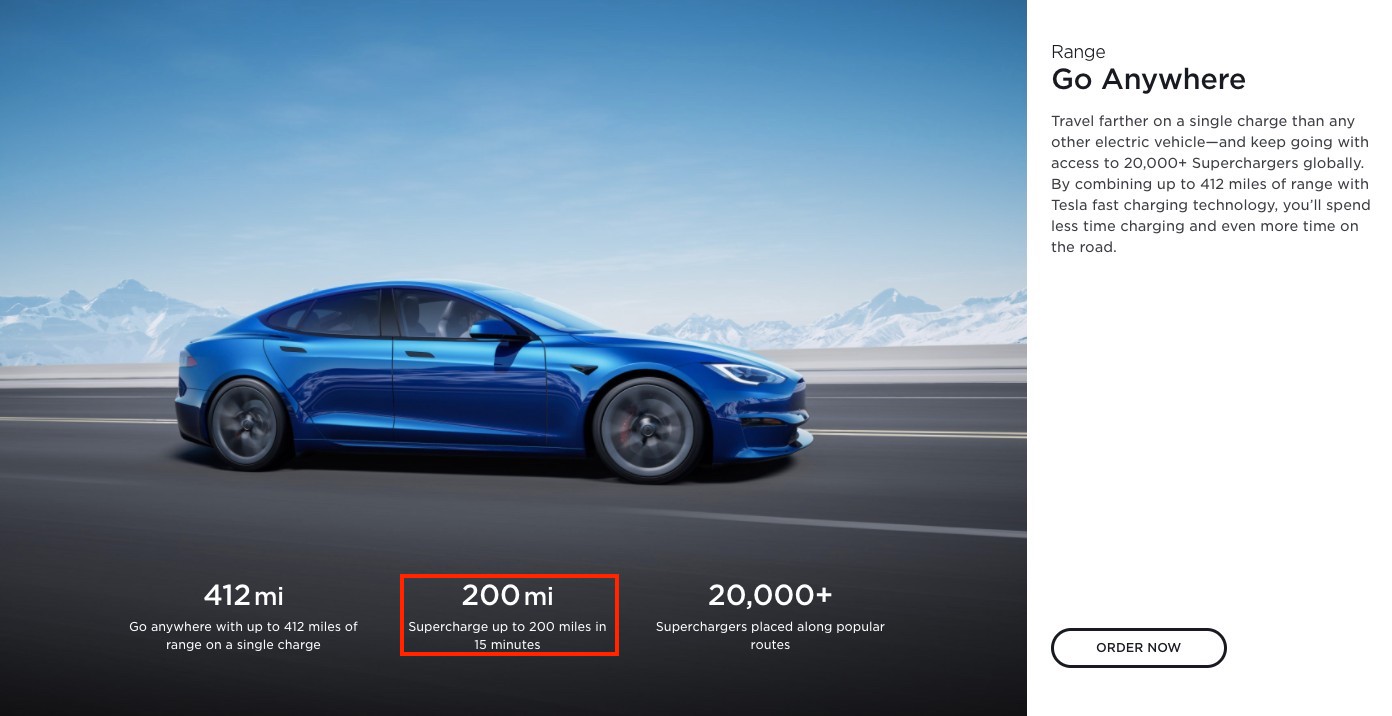
With the rollout of the Model S and Model X refresh, Tesla has brought its two flagship vehicles back to the front of the pack. This was especially true of the Model S, which now features a Plaid drivetrain that allows it to reach a 0-60mph time of less than 2 seconds and a top speed of 200mph. But that’s not all – a look at the official webpage of the new Model S shows that the flagship sedan is now also Tesla’s fastest rechargeable vehicle.
Tesla’s page for the Model S notes reveals that the flagship sedan is able to complete 200 miles of its range in 15 minutes. This ensures that the Model S refreshes about 12% faster than the Model 3, the fastest charging Tesla before the flagship update. The Model X, for its part, now matches the Model 3’s Supercharging speed, with Tesla noting that the SUV can now charge 175 miles off its range in 15 minutes.

Tesla did not specify the chargers that would allow for the revamped maximum charging speed of the Model S and Model X, although their impressive charging speeds would likely depend on the electric vehicle manufacturer’s 250 kW Supercharger V3 network, which is currently ramping up. Prior to their renewal, the Model S and Model X could not take advantage of the full 250 kW power of the V3 Superchargers. With the refresh, this no longer seems to be the case.
What’s particularly impressive is that Tesla was able to achieve the Model S’s improved charging speed, despite the vehicle still using the 18650 battery cell form factor, which has been in use since the days of the original Tesla Roadster. Elon Musk explained this during the Q4 FY 2020 earnings call when he explained that Tesla’s latest vehicles do not necessarily require the company’s larger custom 4680 cells to achieve optimal performance.

“We’re in talks with them about creating the 4680 form factor, but they – it’s not required. For example, the new S currently uses the 18650 form factor. So they’re just a more advanced cell, and we think we’ll keep using that form factor for at least a few more years. But we will retire form factors over time and try to transition to a consistent form factor.
“But it’s not a requirement that we place on our suppliers because they would – it would just result in fewer cells. So it is better for us to deal with the complexity of different cell shape factors than insisting on a single form factor for our suppliers today. As I said, over time it will make sense to have a consistent form factor, ”noted Musk.
Feel free to contact us for news tips. Just send a message to [email protected] to give us a call.